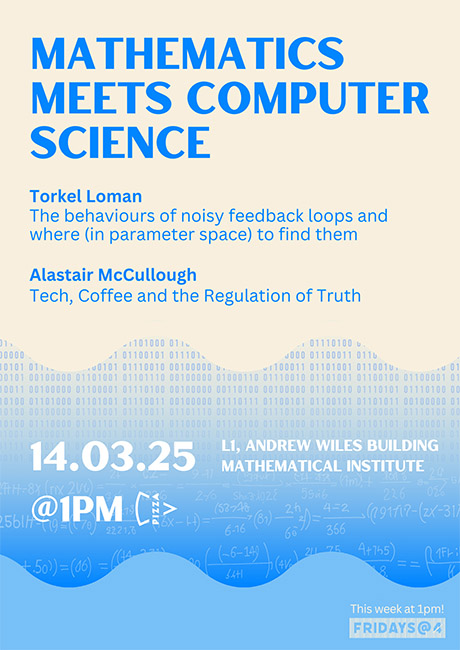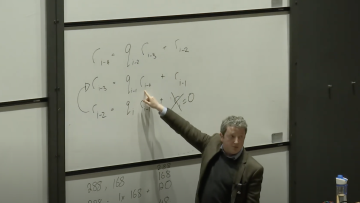16:00
On periods and $L$-functions for $\mathrm{GU}(2,2) \times \mathrm{GL}(2)$
Abstract
The study of periods of automorphic forms is a key theme in the Langlands program and has become an important tool to tackle various problems in Number Theory and Arithmetic Geometry. For instance, Waldspurger formula and its generalisations have created a fertile ground for numerous arithmetic applications. In recent years, the conjectures of Sakellaridis and Venkatesh (and then Ben-Zvi, Sakellaridis, and Venkatesh) in the context of spherical varieties has led to a deeper understanding of automorphic periods and their relation to special values of $L$-functions. In this talk, I present work in progress aimed at looking at certain non-spherical cases. Precisely, I will describe a new integral representation of the degree 12 "exterior square x standard" $L$-function on generic cusp forms on $\mathrm{GU}(2,2) \times \mathrm{GL}(2)$ (or $\mathrm{GL}(4) \times \mathrm{GL}(2)$) and how it can be used to relate the non-vanishing of its central value to a certain cohomological period. If time permits, I will describe how the same strategy applies to the case of $\mathrm{GSp}(6) \times \mathrm{GL}(2)$. This is joint work with Armando Gutierrez Terradillos.
Fridays@4 is this week Fridays@1 in L1 with lunchtime pizza.
Torkel Loman (Oxford Mathematics) - The behaviours of noisy feedback loops and where (in parameter space) to find them
Alastair McCullough, pictured (Computer Science) - Tech, Coffee, and the Regulation of Truth: An Enterprise Barista's Story
L1, today, Friday 14 March
13:00
Mathematics meets Computer Science
Abstract
In this Fridays@4 event – for this week renamed Fridays@1 (with lunchtime pizza) – Torkel Loman from the Mathematics Institute and Alastair McCullough from the Department of Computer Science will present their talks.
Torkel Loman
The behaviours of noisy feedback loops and where (in parameter space) to find them
Alastair McCullough
Tech, Coffee, and the Regulation of Truth: An Enterprise Barista's Story
Torkel's abstract
Mixed positive/negative feedback loops (networks where a single component both activates and deactivates its own productions) are common across biological systems, and also the subject of this talk. Here (inspired by systems for e.g. bacterial antibiotics resistance), we create a minimal mathematical model of such a feedback loop. Our model (a stochastic delay differential equation) depends on only 6, biologically interpretable, parameters. We describe 10 distinct behaviours that such feedback loops can produce, and map their occurrence across 6-dimensional parameter space.

15:30
Systolic freedom
Abstract
Patrick has been awarded the Germund Dahlquist prize from the Society for Industrial and Applied Mathematics (SIAM) for his "broad, creative, and groundbreaking contributions to numerical solutions of partial differential equations, and the design and analysis of algorithms and software for scientific computing".


